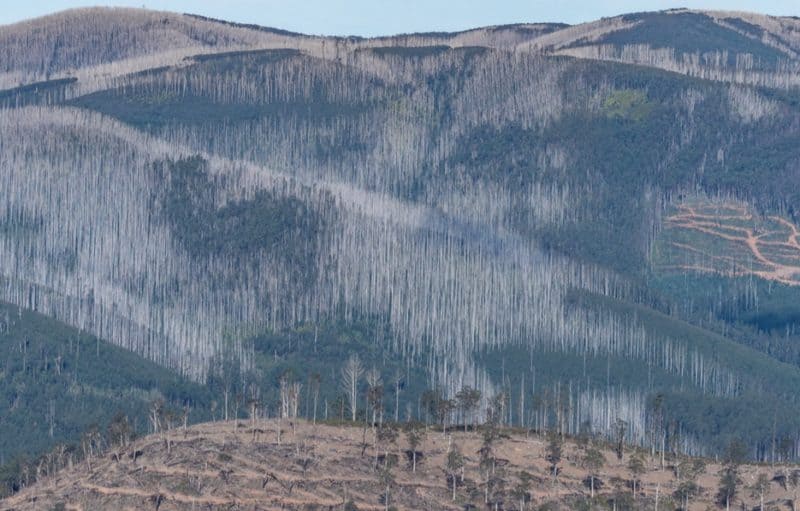Key issues with the draft Coastal Management Plan
Background:
- The reserve is 18-20 kilometres in length, meaning that the training will expand from two kilometres to five kilometres, or from 10 to 25 per cent of the reserve’s beaches—a 250 per cent increase. The plan also includes training 750 metres into the sand dunes at Levy’s Beach and Hoon Hill.
- Belfast Coastal Reserve was set up in the 1980s to conserve cultural sites, coastal wildlife—it’s a breeding hotspot for the nationally threatened hooded plover—and support recreational activities. Commercial racehorse training was never in the mix, but rapidly expanded a few years ago after a local horse won the Melbourne Cup in 2015.
Why is commercial horse training an issue?
- The racehorses churn up the sand, disturb the adult birds and chicks, crush eggs and destroy protective fencing. They also risk public safety and enjoyment for beachgoers.
- Ever since their invasion a few years ago, racehorse training has been mismanaged, with numerous breaches of licensing conditions, public safety put at risk, and taxpayers footing the bill for costly surveillance and infrastructure upgrades. Expanding the number of training beaches will simply make it worse.
Some key issues in Draft Management Plan
- A fact sheet issued by the state government on 15 November 2016, at the time of its announcement that it would licence commercial racehorse training in the reserve, stated: “The number of horses permitted to train on beaches within the Belfast Coastal Reserve will be reduced to a maximum of 65 across the reserve.”
- Now the draft plan will reverse the cap of 65 and allow up to 250 racehorses on the beach per day.
- The draft plan claims that: Due to community interest, the draft plan proposes that commercial horse training be permitted at Golfies Beach, Levys Beach and Hoon Hill into the future (see Map 1. below) and horse training be permitted at Rutledges Cutting and Killarney Beach to provide access for local trainers that have historically used the reserve. This is an increase from approximately two kilometres to five kilometres (250 per cent) in the area open to commercial racehorse training.
- The plan cites many examples of the impacts from horse training but fails to explain how increasing the area available to it will minimise those impacts
- It is impossible for commercial horse training to occur in areas where there are no hooded plovers (see map Map 2. below)
- The zoning map in the management plan divides the reserve into two zones: Conservation (and no horses) and Conservation and Recreation. But horse training is to be allowed at Rutledges Cutting inside the Conservation Zone, presumably because it is ‘historical’. And the definitions of the two zones within the plan refer only to recreational uses, not commercial ones.
- The draft plan includes racehorse training at the current Golfies and Ruttledges Cutting sites plus Killarney Beach, Levy’s Beach and Hoon Hill. See Map 1.
- The plan also includes taxpayer-funded infrastructure upgrades at Killarney and Levy’s beaches and the Hoon Hill dunes, to service commercial horse training.
- Over the last year or so, the industry was licensed for training along two kilometres of the reserve’s beaches: 800m at Golfies and 1200m at Rutledges Cutting. Community observers have noted frequent breaches of the licence conditions at Golfies, where horses have often gone beyond the approved 800m stretch of beach towards Mills Reef, an area favoured by nesting plovers.
- The plan is unclear on whether the two stretches of licensed beaches will be the same or extended, or whether racehorse training could further increase in the future.
- The plan claims that it is consistent with ‘with the existing strategies and guidelines of relevant governing bodies and is being prepared in consultation with the community’. It’s not consistent with LCC recommendations for the Victorian coastal strategy, or the Crown land (Reserves) Act or the Coastal Management Act.
- Not one of the LCC’s six recommended zones mapped in the plan’s Appendix refers to commercial horse training (or recreational horse riding) but refers to conserve wildlife, provide for low-intensity recreation and public education, maintain the scenic beauty and stability of the area, provide for nature study activities, walking, and fishing.
- According to the plan: All use and development of Coastal Crown Land requires consent under the Coastal Management Act 1995 from DELWP, as well as the consent of the land manager e.g. Parks Victoria, Moyne Shire Council or Warrnambool City Council. This wasn’t done for commercial racehorse training.
- In a risk assessment carried out for the plan, the commercial racehorse training risk was rated as extreme across dunes and beaches before and after management action e.g licensing, yet it still gets expanded.
Map 1.
Map 2.


